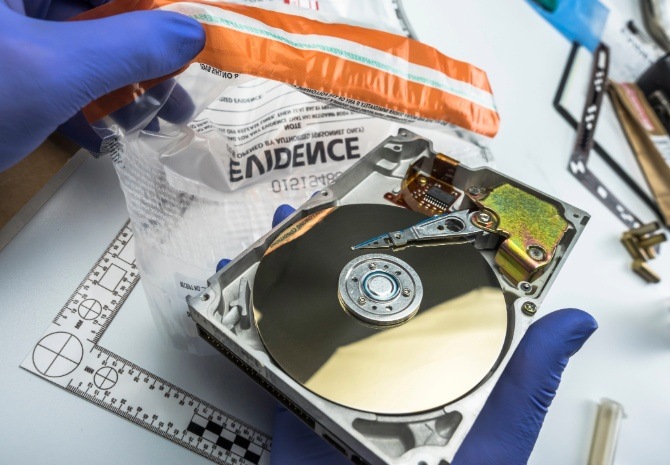
When something happens online that isn’t supposed to happen, from fraudulent activity to a coordinated cyberattack, the data and systems involved can provide clues as to who did what, where, and why. Obtaining that information and insight can, therefore, be critical in tracking down the perpetrators and helping organizations ensure that the incident cannot be repeated - and that’s where digital forensics comes in.
Digital forensics is the practice of investigating malicious activity from any type of digital device and compiling evidence for further analysis or reporting. It’s a highly specialized activity, but with cybercrime on the rise and digital technology becoming ever more important in our lives, it’s a critical function for any organization.
This article explores how digital forensics works, when it’s needed, and the key challenges to bear in mind in a constantly changing world.
Why is digital forensics important?
Digital forensics is important because more and more crimes and malicious activities now involve connected and digital devices. Developing digital forensics processes gave investigators and law enforcement authorities structured means to gather evidence around potential wrongdoing that would be admissible in court.
As data volumes and different use cases for digital technologies continue to expand, the relevance of digital forensics is only increasing. With a wider base of data, systems, and applications, it’s becoming more complex and time-consuming to investigate issues, especially for in-house IT and security teams. Now more than ever, specialist digital forensics functions are essential for thoroughly conducting investigations and taking all relevant evidence into account.
How does digital forensics work?
The procedure for digital forensics is well-defined across all types of devices and systems being investigated. All good digital forensics teams will, therefore, follow this four-step process:
Data collection
Digital forensics teams will identify the devices they intend to collect data from and will then make a duplicate of all the data on those devices onto their own hard drive. When this is complete, they will also lock down the original data so that it cannot be tampered with retrospectively.
Examination
The investigation team will then thoroughly assess the data and any associated metadata, looking for evidence or clues that point towards criminal activity. As part of this, they will also aim to recover data that was previously deleted in areas such as system cache, web browser histories, and hard disks.
Analysis
The evidence that the investigation team has found will then be subjected to detailed analysis techniques. These can include live analysis of running systems and reverse steganography that looks for coded information within otherwise innocuous-looking content or messaging.
Reporting
All the evidence and analytical results are then compiled into a report by the digital forensics team, who will also draft conclusions and recommendations based on that evidence. This could be suggestions of criminal wrongdoing by a person or organization or could be suggestions of how to close off cybersecurity vulnerabilities.
What are the different types of digital forensics?
There are several different types of digital forensics, which vary according to the type of device or system being investigated:
Computer forensics
This is probably the most common type of digital forensics and is often confused with the wider term itself. It brings together forensics efforts and computer science to dig deep into computers and unearth evidence and insights.
Mobile forensics
Looking for evidence within mobile devices
has become increasingly important as smartphones and tablets have grown in
everyday use, especially as they can contain contacts, photos, videos, and
other personal information.
Database forensics
With databases likely to contain large
quantities of information, they can be a fruitful target for investigation
teams looking for evidence of a data breach or other types
of data loss.
Memory forensics
Every device’s Random Access Memory (RAM) has the potential to point towards malicious activity, especially if it is alleged to have taken place relatively recently.
Network forensics
Network traffic and web browsing is a
common port of call for investigation teams trying to track down the
perpetrator of the offenses in question.
File system forensics
All the files and folders stored on any type of endpoint devices are a standard area of investigation for digital forensics teams, across end-user devices like laptops to large-scale servers in data centers.
Where and when is digital forensics needed?
In a world that is so dominated by digital services and functionality, digital forensics delivers clarity and insight in several important areas. These include:
Legal cases
The reports compiled by recognized digital forensics teams can be used as evidence in a court of law. Having clear proof of a transgression can be instrumental in succeeding with a prosecution or civil lawsuit and ensuring that the perpetrators of the malicious activity are brought to justice.
Data disclosure cases
When companies release data into the public domain or to other parties that they weren’t supposed to, it’s important to get to the bottom of how and why it happened. Whether the leak was deliberate or not, digital forensics can help pin down the reason and cause so that steps can be taken to prevent a repeat.
Intellectual property theft, fraud and industrial espionage
Business data is extremely sensitive and valuable. The damage that can be caused if it falls into the hands of a criminal - or a competitor - can be catastrophic in legal, financial, and reputational terms. Digital forensics can be crucial in tracking down any attempts to seize funds, data, or intellectual property and ensure that the organization’s interests are safeguarded.
Cyberstalking
The issue of cyberstalking has grown in the last few years, and the extent to which people live their lives online can make them especially vulnerable. When victims are unsure who their stalker is or why they’re doing it, a digital forensics investigation can help track down the person or people responsible.
Workplace disputes
When there have been allegations of misconduct made against an employee, or an employee is suspected of conducting a cyberattack or other rogue behavior internally, digital forensics can establish exactly what did or didn’t happen. This ensures that HR teams and other business leaders make the right decisions, in line with employment law and with clear evidence.
Security analysis
Digital forensics can form part of wider cybersecurity investigations that can uncover dangerous vulnerabilities within systems, data and applications that cybercriminals could exploit. Establishing what these are allows security teams to proactively close off these gaps and understand how to respond as rapidly as possible in the event of an attempted breach or attack.
Digital Forensics Incident Response (DFIR)
Digital forensics is often combined with incident response in a coordinated approach that ensures that one activity doesn’t trip over the other. DFIR can simultaneously address cyber threats and compile evidence of malicious actions. This approach allows for rapid mitigation of breaches while also providing the foundation for further legal action. Kaspersky supports this process with advanced tools such as Information Security Incident Response, ensuring effective handling and resolution.
What are the key challenges around successful digital forensics?
Getting digital forensics right isn’t an easy or quick task, and for a variety of reasons, it isn’t getting any easier. Common challenges and complications around successful cybersecurity investigations include (and are not necessarily limited to):
Data security and encryption
It’s increasingly common for malicious actors to use encryption technologies to mask or conceal their criminal activities. Without having the encryption keys, the ability to get hold of vital data and evidence can be rendered extremely difficult and time-consuming. It’s for this reason that digital forensics providers constantly invest in skills and expertise so that they are conversant with the latest encryption methods and technologies.
Technological evolution
With new innovations in software and hardware coming on stream all the time, it can be hard to keep up with who is capable of doing what with different devices, applications, and access credentials. Just as in cybersecurity more widely, digital forensics teams are in a never-ending arms race to understand the threats that are out there and stay one step ahead of the cybercriminals.
Data scale and complexity
Globally, the amount of data all around us is growing all the time and is becoming more and more complex and diverse. The only way that digital forensics teams can realistically gain the insights and evidence they’re looking for is to be supported by advanced tooling and investigation techniques. These can help investigators expedite the search through a range of different data sources, from solid state drives to social media accounts.
AI and IoT
Connected to the previous point, the rise of artificial intelligence and the Internet of Things gives cybercriminals more opportunities to launch smarter, AI-assisted attacks and exploit IoT device vulnerabilities. However, the same technologies can also be used by digital forensics teams to their advantage: they can use AI and IoT data to conduct fast, in-depth searches and uncover new levels of insight and evidence that they might otherwise have overlooked.
Privacy and ethics concerns
Data protection and privacy are major concerns among the public, especially with the advent of mainstream AI and a regular stream of high-profile data breaches. Digital forensics teams will be expected to follow regulations and ethical best practices thoroughly and ensure that the need to gain evidence is not done so at the expense of people’s right to privacy online.
Sourcing the right expertise
All of the above can make digital forensics investigations highly complex, which is why it’s so important to work with an experienced, expert team with the best skill sets and tooling. For example, Kaspersky Incident Response combines IR with digital forensics and malware analysis in a coordinated approach that establishes a complete picture of an incident and takes steps to remediate it. Our specialists have extensive practical experience that is ideal for getting systems and business operations back on track, thanks to rapid, fully informed responses that reduce recovery times and costs.
Related Articles:

